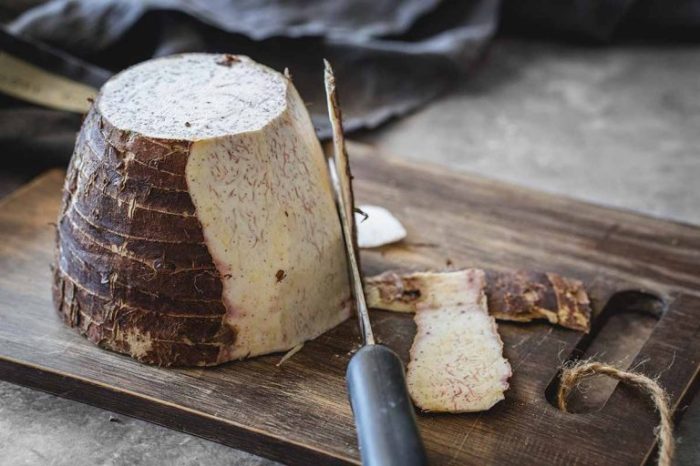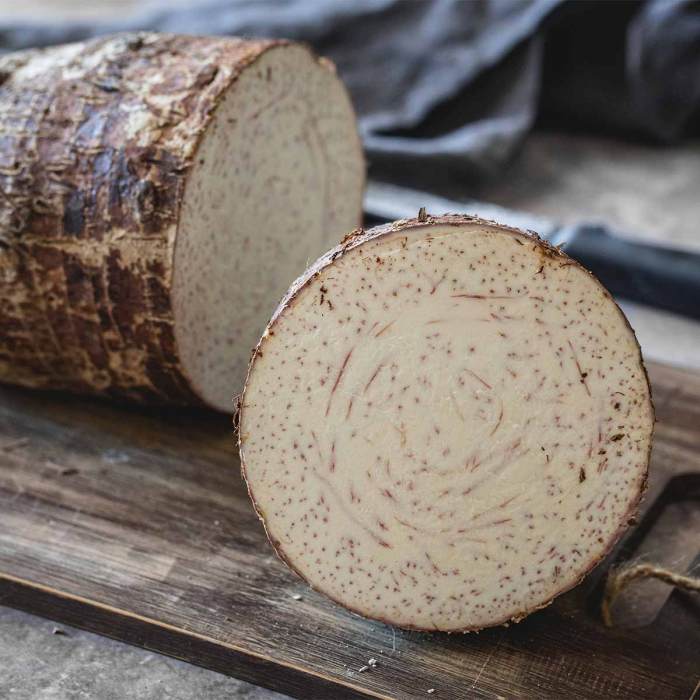Introduction
How to cook taro root indian style – In this exclusive interview, we will delve into the art of cooking taro root in Indian style. Taro root, also known as arbi in Hindi, is a versatile vegetable that is widely used in Indian cuisine. It has a unique flavor and texture that adds a delicious touch to various dishes.
What is Taro Root?

Taro root is a starchy tuber that belongs to the Araceae family. It is native to Southeast Asia and India, but is now cultivated in many tropical regions around the world. Taro root has a brown, hairy skin and a white or pink flesh. It has a slightly nutty flavor and a texture similar to potatoes.
Known for its Health Benefits
Taro root is not only delicious, but it also offers a range of health benefits. It is rich in fiber, vitamins, and minerals, making it a nutritious addition to your diet. Taro root is also low in calories and fat, making it a great choice for those looking to maintain a healthy weight.
Tips for Cooking Taro Root
When cooking taro root, it is important to properly clean and peel the vegetable before using it. Taro root contains oxalates, which can cause skin irritation, so it is advisable to wear gloves when handling it. To reduce the oxalate content, you can soak the peeled taro root in water for a few hours before cooking.
Alright mate, if you’re looking to spruce up your pad, you gotta check out this guide on how to decorate your windows. From funky curtains to sleek blinds, this article has all the tips and tricks you need to make those windows pop! Give it a read and get your DIY on!
Indian Style Cooking
In Indian cuisine, taro root is often used in curries, stir-fries, and snacks. One popular way to cook taro root is to make a spicy arbi curry. To do this, you can sauté chopped taro root with onions, tomatoes, and a blend of Indian spices until the vegetable is tender. Serve the curry with rice or roti for a delicious meal.
Solution for a Delicious Dish
To ensure that your taro root dish turns out perfectly, it is important to cook the vegetable until it is soft and tender. You can test the doneness of the taro root by piercing it with a fork – if it goes in easily, the vegetable is ready. Garnish your dish with fresh coriander leaves and a squeeze of lemon juice for added flavor.
Detail Information: How To Cook Taro Root Indian Style

When selecting taro root for cooking, look for tubers that are firm and free of blemishes. Store the vegetable in a cool, dark place to keep it fresh. If you have leftover cooked taro root, you can use it to make snacks like taro root fritters or add it to salads for a nutritious boost.
Describe in Depth
Cooking taro root in Indian style is a delightful culinary experience that allows you to explore the rich flavors of Indian spices and ingredients. Whether you are a novice cook or a seasoned chef, experimenting with taro root in your kitchen will surely result in a delicious and satisfying meal.
Conclusion
In conclusion, cooking taro root Indian style is a wonderful way to enjoy this versatile and nutritious vegetable. By following these tips and techniques, you can create mouthwatering dishes that will delight your taste buds and impress your family and friends. So, next time you’re in the mood for a flavorful and wholesome meal, give taro root a try!
FAQs

Q: Can I eat taro root raw?
A: It is not recommended to eat taro root raw as it contains oxalates that can cause irritation.
Q: How should I store taro root?
A: Store taro root in a cool, dark place away from sunlight to keep it fresh.
Q: What dishes can I make with taro root?
A: You can make curries, stir-fries, fritters, and salads using taro root.
Hey mate, looking to spruce up your pad? Check out this wicked guide on how to decorate your windows. You can add some cool curtains, funky blinds, or even get creative with stickers to give your windows a fresh new look. Give it a go and make your room pop!
Q: Is taro root gluten-free?
A: Yes, taro root is naturally gluten-free, making it a great option for those with gluten sensitivities.
Q: Are there any other names for taro root?
A: Yes, taro root is also known as arbi in Hindi and colocasia in Latin.
